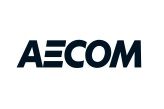Rodenticides Market is Estimated at USD 4.7 Billion in 2019 and Projected to Grow at a CAGR of 3.7% to Reach USD 5.9 Billion by 2025 - ResearchAndMarkets.com
The "Rodenticides Market by Type (Non-Anticoagulants, Anticoagulants (FGAR, SGAR)), End-Use Sector (Agricultural Fields, Warehouses, Urban Centers), Mode of Application (Pellets, Sprays, Powders) & Region - Global Forecast to 2025" report has been added to ResearchAndMarkets.com's offering.
The Rodenticides Market is Estimated at USD 4.7 Billion in 2019 and Projected to Grow at a CAGR of 3.7% to Reach USD 5.9 Billion by 2025.
Urbanization and public awareness regarding chemical rodenticides support market growth.
The growth of the rodenticides market is driven by a rapid increase in urbanization and industrialization, which create the need for pest and rodent control. Global warming and increase in temperature are the issues of concern since the warmer climate is one of the reasons for the increase in the rodent population in the urban areas, which, in turn, gears the market growth for rodenticides.
The anticoagulants segment, by type, dominated the market with a larger share in 2018.
On the basis of type, the rodenticides market is classified into non-anticoagulant rodenticides and anticoagulant rodenticides. The anticoagulants play a major role in the control of commensal rodents such as Norway rats, ship rats, and house mice. About 95% of the chemical control of rodents in the US is done using anticoagulants. Depending on the intensity of the dosage and number of doses, they are further categorized into first-generation anticoagulants and second-generation anticoagulants. The second-generation anticoagulants are more effective, as they provide results after a single dosage and does require second positioning of the product.
The pellets segment accounted for the largest share in 2018.
Based on the mode of application, pellets are observed to hold a dominant share in the rodenticides market. Most of the companies offer rodenticide products in the pellet form, as they can be easily used with the coating of baits around them. Pellets are one of the most cost-effective solid baits and can be kept in bait stations to protect them from the reach of the children when used in residential areas. Apart from pellets, fumigant, spray, and powder modes of application are also used according to the feasibility of the application area.
The urban centers segment, by end-use sector, holds the dominant market share in the rodenticides market.
Based on end use, the urban centers segment, not only dominates the rodenticides market but also is projected to hold the largest market share between 2019 and 2025. Urban centers include both residential as well as commercial spaces. The high pace of urbanization, along with the increasing living standards of the people, leads to intolerance of rodents. Moreover, the development of public hygiene programs in regions like the US and Paris with a larger population living in urban areas, support the growth of the rodenticides market in urban centers.
High growth is projected in the Asia Pacific rodenticides market.
The Asia Pacific market is projected to be the fastest-growing market for the period considered for this study. The region's growing concentration of urban population poses a strong potential for rodenticide manufacturers and pest control service providers. The effects of climate change, and in certain cases, the negligence toward sanitary conditions in urban slums have resulted in multiple disease outbreaks. Improvements in legislation and policies surrounding the requirement of rodent control have benefitted rodent control service providers in the Asia Pacific region. To meet the increasing demand for food and to reduce the crop damage caused by rodents, the use of rodenticides has increased significantly in the region.
Market Dynamics
Drivers
- Increasing Rodent Population
- Urbanization Causing Rat Displacement
- Impact of Climate Change on the Breeding of Rats
- Increasing Damage Due to Rodent Attack
Restraints
- Stringent Regulations and Ban on the Use of Rodenticides in Developed Countries
- Increasing Use of Mechanical Methods for Rodent Control
Opportunities
- Development of Non-Toxic and Third-Generation Anticoagulants
- Increasing Government Initiatives and Support of Public Corporations for Rodent Control
Challenges
- Resistance Against Anticoagulant Rodenticides
- High Toxicity of Rodenticides
Leading players profiled in this report:
Rodenticide Product Manufacturers:
- BASF SE (Germany)
- Bayer (Germany)
- Syngenta (Switzerland)
- UPL (India)
- Liphatech Inc. (US)
- JT Eaton (US)
- Neogen Corporation (US)
- Pelgar International (UK)
- Senestech Inc. (US)
- Bell Laboratories (US)
- Impex Europa (UK)
Rodenticide Service Providers:
- Rentokil Initial Plc (UK)
- Terminix (US)
- Ecolab (US)
- Anticimex (Sweden)
- Rollins (US)
- Truly Nolen (US)
- Abell Pest Control (Canada)
For more information about this report visit https://www.researchandmarkets.com/r/hyijvu
View source version on businesswire.com: https://www.businesswire.com/news/home/20190618005493/en/





